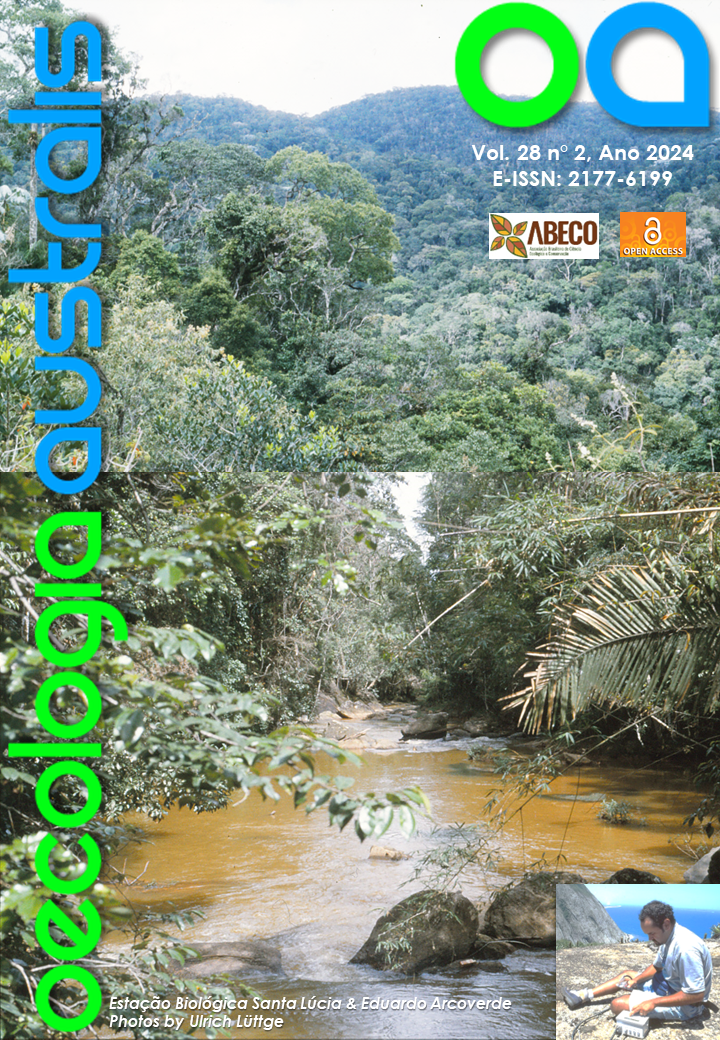SIMILAR TURNOVER RATES BETWEEN PTERIDOPHYTES AND ANGIOSPERMS TREES ALONG THE NORTHERN ECUADOR ANDEAN FOOTHILLS
Turnover rates of two plant groups in Ecuador
DOI:
https://doi.org/10.4257/oeco.2024.2802.06Abstract
Tropical mountain forests are areas of high plant diversity. While alpha diversity patterns are better documented along altitudinal gradients, how beta diversity varies between elevation ranges is less well known. Specifically, how turnover rates, as measured in a distance-decay models, are comparable between co-occurrent groups is still to be explored. We tested whether two distant related plant clades, pteridophytes (ferns and lycophytes) and angiosperm trees, have similar distance-decay rates along the same altitudinal gradient in the east flank of the tropical Andes of Ecuador. We found that both groups showed a strong decay in higher elevations that stabilised in the lower elevations. When sub-setting the data to have samples from both groups for the same elevation ranges, distance-decay curves were more similar, suggesting that the same environmental filters act in the assembly of communities of both groups. This result contributes to the understanding of the mechanisms of species distribution in high diversity areas.


